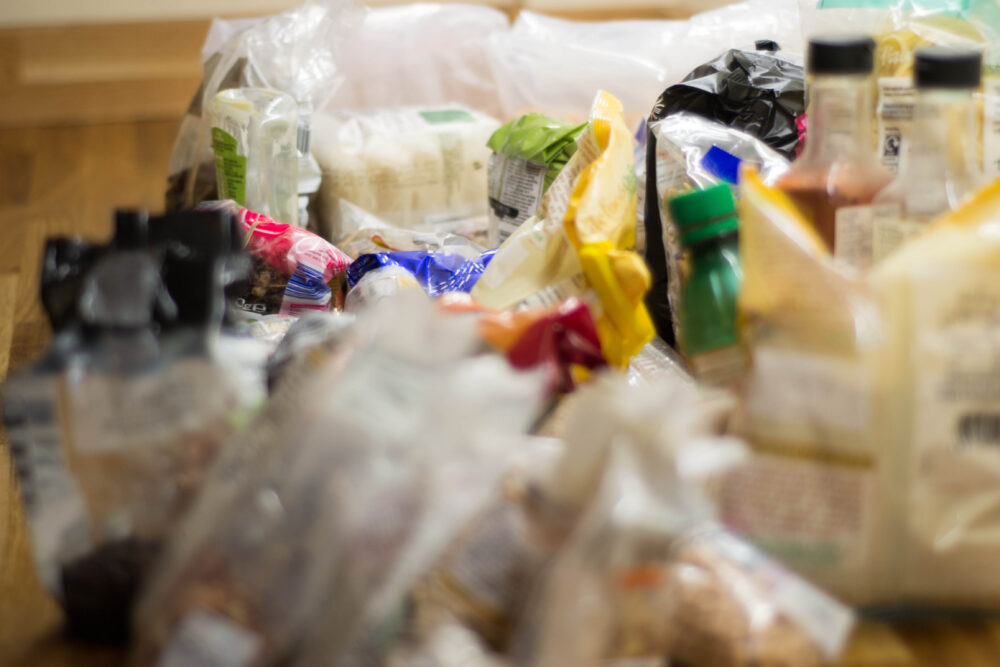
Here it is, our first blog post!
We thought it only fitting to begin our blog journey with the very reason we chose to open a zero waste shop…plastic. We have had a few people ask us why we have chosen to open this shop and I hope this article will help clear up exactly what the problem is that we are trying to address.
In a (very small) nutshell, plastic = bad. Expanding that slightly plastic does not biodegrade or break down. Every plastic thing you have ever bought is still in existence. Think of all the plastic items you have bought, used and discarded so far in your life. Every toothbrush, every disposable razor, every straw, disposable camera, plastic bag, hair brush, shampoo container, plastic cutlery and plates, disposable coffee cups, plastic bottle, etc. etc. The list goes on (and on and on). All of these items are still on this planet, in much the same form as you probably last saw them. I have heard people refer to when they were first introduced to plastic, this wonderful material which lasts forever. Only now are we beginning to realise what that means. Plastic is becoming a common feature of our natural environments, from our seas and coasts to our beautiful countryside.
But let’s take a step back and consider what plastic is. Essentially, plastic is made from crude oil , which is a non-renewable resource. In fact, around 4% of the world oil production is used to make plastic, and a similar amount in energy for the process. This means that even if we wanted to (which we definitely do not) we could not keep producing plastic forever. The crude oil goes through a process known as distillation in an oil refinery, which separates out the different types of compounds within crude oil (called fractions). The fraction called naphtha is the crucial element in making plastic. There are lots of different types of plastic and the next steps in the process depend on what type is being made.
In the UK, around 3.7 million tonnes of plastic waste was generated in 2014, with plastic packaging from households accounting for 1.5 million tonnes. That is a huge amount of plastic, especially when you think about how little plastic weighs. 1 kg of household plastic fills a standard wheelbarrow…so the figures suggest that households in the UK are generating around 1,500,000,000 wheelbarrows of plastic waste EVERY YEAR. I can’t even imagine what that looks like. The largest source of plastic packaging is the grocery retail sector, which is unsurprising when you think about all those food items which come wrapped in some form of plastic. Pasta, rice, meat, some fruit and vegetables, cereals even have plastic bags inside the cardboard box.
So 1.5 billion wheelbarrows of plastic are discarded every year. The question then is what happens to it? Well, rigid plastic such as bottles and food trays can be recycled and most Local Authorities in the UK now offer this service. Sadly, this doesn’t necessarily mean they are recycled; in 2014, only 57% of plastic bottles were collected for recycling. Thin, non-rigid plastic is another matter. Only around 5% of this material is collected at the kerbside. Recycling rates for plastic equate to around 40% of all plastic waste produced, the rest is taken to landfill or incinerated. Most of this recycled plastic(60%) is turned back into packaging.
That is a lot of numbers to process there but suffice to say that not all plastic packaging, in fact only just over half, is collected. In total, less than half of all plastic waste produced is recycled. This means there is a huge amount of plastic packaging which is collected and goes to landfill sites and another very large amount of plastic which isn’t even collected and ends up in our natural environment (think of all that litter you’ve seen on the side of roads and on beaches).
As well as looking unsightly, plastic in our natural environment is a disaster for wildlife, particularly, but not exclusively, our marine wildlife. A study in South Wales found that 63% of all marine debris was plastic. Plastic waste affects 86% of all sea turtle species, 44% of all seabird species and 43% of all marine mammal species and is increasing all the time. Threats to marine life from plastic include:
– Ingestion of plastic debris and subsequent absorption of polychlorinated biphenyls (PCBs) by marine animals. PCBs lead to reproductive disorders and death in animals
– Entanglement in packaging. Young seals are attracted to floating debris and will often poke their head into loops and holes. Many seal pups grow into plastic collars which tighten over time, cutting off blood and oxygen supply.
Many of these species are already in danger of extinction from other human activities, such as hunting and fishing and the impact of plastic may be the last straw for many of them.
All of this is very sobering and close to home. We have probably all seen plastic litter on beaches and definitely on the side of roads. I am guilty of having previously thought that putting my rubbish in the bin was all I had to do. Out of sight, out of mind. But it is increasingly apparent that this is not the case. Plastic is a BIG problem, and one we can all help address.

I read that China is about to stop importing our waste. What impact is this likely to have?
Hi there,
Yes I read about this too. There are several potential impacts but I hope it will mean there will be tighter regulation around the production of plastic and other waste in the first place. The overall impact will hopefully then be a reduction in production or a switch to more sustainable, reusable alternatives, such as glass and paper.
Thanks for the comment :).